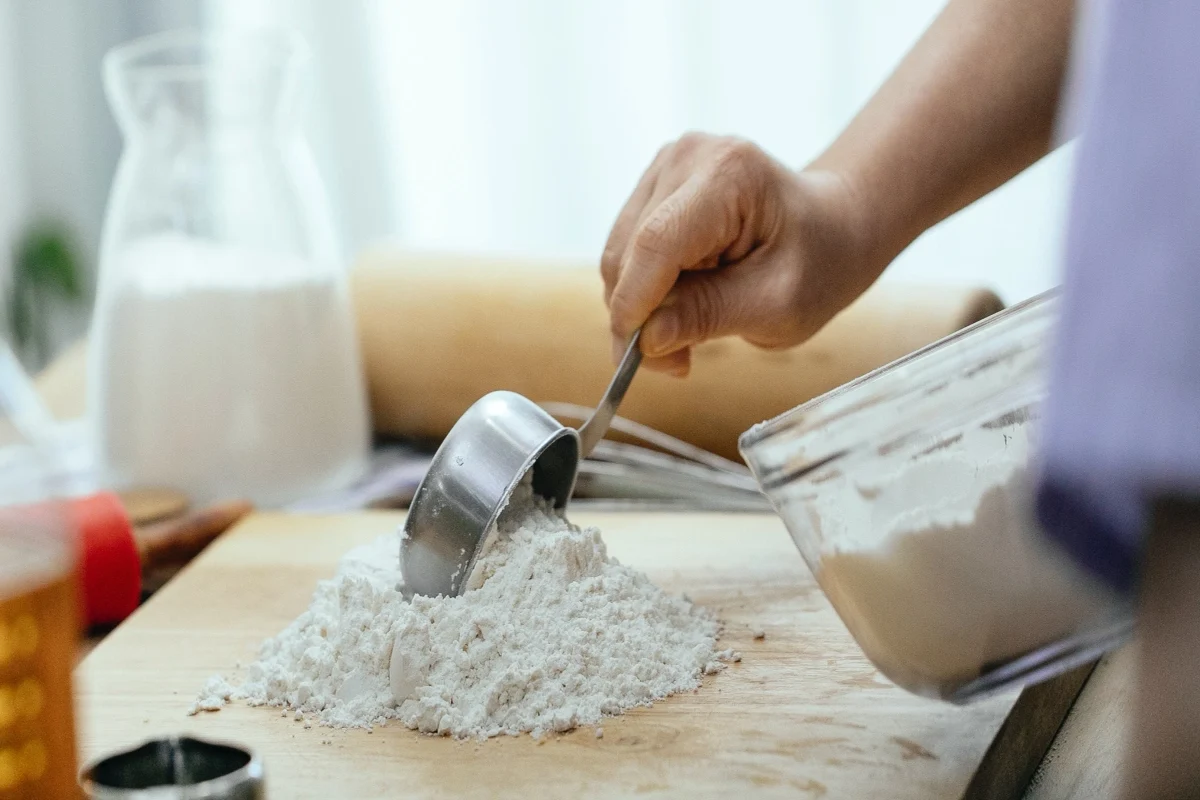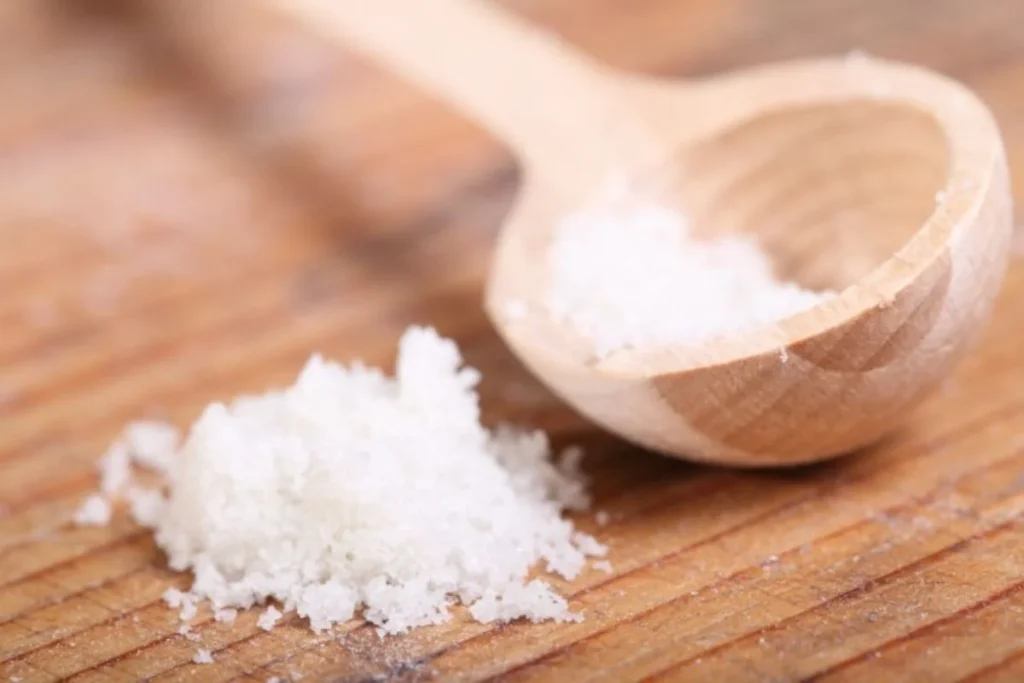
Baking Hacks: How to Get Rid of That Unpleasant Flour Taste in Your Cakes
Baking is an art that requires precision, patience, and a little bit of experimentation. But even the most experienced baker my self can run into unexpected issues, like the unpleasant taste of flour in their cakes.
This common problem can leave your baked goods with a chalky and unpleasant flavor that can ruin an otherwise delicious dessert. Fortunately, there are a few simple baking hacks that can help you get rid of that unpleasant flour taste and create mouth-watering cakes every time.
In this article, we’ll share some tips and tricks to help you banish that unwanted flavor from your cakes and create perfectly baked treats every time.
Whether you’re a seasoned baker or just starting, these baking hacks are sure to become a valuable addition to your baking arsenal. So let’s get started and learn how to make your cakes taste as good as they look!
Table of Contents
ToggleUnderstanding the Cause of Flour Taste in Cakes
Before we delve into the baking hacks that can help you eliminate the flour taste in your cakes, it’s important to understand why this issue occurs. Flour taste is a common problem that can arise when you use too much flour or don’t mix the ingredients properly. When you use too much flour in your recipe, it can create a dry and chalky texture that can be unpleasant to the palate.
Additionally, if you don’t mix the ingredients properly, you may end up with pockets of flour that haven’t been fully incorporated, resulting in a floury taste in your cakes.
Another factor that can contribute to flour taste is the type of flour that you use. Some flours are more absorbent than others, which can affect the texture and flavor of your baked goods.
For instance, cake flour is finely milled and has a lower protein content, which makes it ideal for creating light and fluffy cakes. All-purpose flour, on the other hand, has a higher protein content and can create a denser texture.

5 Baking Hacks to Eliminate Flour Taste
These five methods are my favorites. My father taught me these methods based on his experience.
1. Sift Your Flour
Sifting your flour is a crucial step that can help eliminate any unpleasant flour taste in your cakes. The process of sifting breaks up clumps in the flour and aerates it, resulting in a lighter and fluffier texture. Sifting also ensures that the flour blends evenly with other ingredients, preventing pockets of flour that can create a floury taste.
To sift your flour, measure the required amount and pour it into a fine-mesh strainer or sifter. Gently tap the strainer or sifter over a mixing bowl to sift the flour. Repeat this process until all the flour has been sifted and is free of clumps.
2. Use the Creaming Method
The creaming method is a popular technique that can help eliminate the flour taste in your cakes. This method involves combining butter and sugar until the mixture becomes light and fluffy. Creaming incorporates air into the batter, and when you add flour, it binds to the air bubbles, resulting in a lighter and fluffier texture.
To use the creaming method, start by creaming together your butter and sugar until the mixture is light and fluffy. Add the eggs one at a time, mixing well after each addition. Finally, add your dry ingredients, including the sifted flour, and mix until just combined.
3. Add a Flavor Enhancer
To mask the flavor of flour in your cakes, you can add a flavor enhancer like vanilla extract or almond extract. These extracts impart a delicious and subtle flavor to your cakes, enhancing the overall taste and minimizing the prominence of the flour flavor.
To use a flavor enhancer, simply add a teaspoon or two of your chosen extract to the batter before baking. Mix the extract well to ensure even distribution throughout the batter. The flavor enhancer will complement the other ingredients and contribute to a more enjoyable cake experience.
4. Incorporate Buttermilk or Yogurt
Incorporating buttermilk or yogurt into your cake batter can help to eliminate the flour taste and create a moist and flavorful texture. These ingredients add acidity to the batter, which reacts with the leavening agents and creates a tender and light crumb.
To use buttermilk or yogurt, substitute a portion of the liquid ingredients in your cake recipe with an equal amount of buttermilk or yogurt. For example, if your recipe calls for 1 cup of milk, you can use 1 cup of buttermilk or yogurt instead. Make sure to adjust the amount of other liquid ingredients accordingly to maintain the right consistency.
When adding buttermilk or yogurt to the batter, mix it in gradually, alternating with the addition of dry ingredients. This method ensures proper incorporation and prevents overmixing, which can result in a dense cake.
5. Toast the Flour
Toasting the flour before using it in your cake batter can help to reduce the raw flour taste and add a subtle nutty flavor to your cakes. Toasting the flour removes excess moisture and enhances its natural flavors, resulting in a more pleasant taste.
To toast the flour, preheat your oven to a low temperature, around 300°F (150°C). Spread the measured amount of flour evenly on a baking sheet. Bake the flour in the preheated oven for about 10-15 minutes, stirring occasionally, until it turns a light golden brown color and emits a nutty aroma. Be careful not to over-toast or burn the flour.
After toasting, let the flour cool completely before using it in your cake batter. You can then sift the toasted flour to remove any clumps that may have formed during the toasting process.
Remember to adjust the measurement of the flour slightly, as toasting can slightly reduce its volume. Use the toasted flour in your cake recipe as you would with regular flour, following the recipe instructions accordingly.
Using Alternative Flours for a Better Taste
If you’re looking to eliminate flour taste in your cakes, you may want to consider using alternative flour. Alternative flours, such as almond flour or coconut flour, can add a delicious and unique flavor to your baked goods that can help to mask the flavor of flour.
- Almond flour is a popular alternative to wheat flour that is made from ground almonds. It has a slightly sweet and nutty flavor that can add a delicious depth of flavor to your cakes. Additionally, almond flour is gluten-free, making it a great option for those with gluten sensitivities.
- Coconut flour is another alternative flour that can add a delicious flavor to your baked goods. It’s made from ground coconut meat and has a slightly sweet and nutty flavor. Additionally, coconut flour is high in fiber and protein, making it a healthy alternative to wheat flour.
When using alternative flours, it’s important to note that they have different properties than wheat flour and may require different measurements or cooking times. Be sure to follow the instructions on the package carefully to ensure that your baked goods turn out perfectly.

Tips for Measuring Flour Accurately
Accurately measuring your flour is an essential step that can help to eliminate flour taste in your cakes. When you use too much flour, it can create a dry and chalky texture that can be unpleasant to the palate. Conversely, if you use too little flour, your cakes may be too moist and not hold their shape.
To measure your flour accurately, use a kitchen scale to weigh out the required amount. This is the most accurate method as it ensures that you’re using the correct amount of flour.
If you don’t have a kitchen scale, you can use a measuring cup, but be sure to spoon the flour into the cup and level it off with a knife. Do not pack the flour into the cup as this can result in too much flour being used.
How to Choose the Right Flour for Your Recipe
Choosing the right flour for your recipe is an important step that can affect the texture and flavor of your baked goods. As we mentioned earlier, different flours have different properties that can affect the final product.
- Cake flour is a popular choice for creating light and fluffy cakes. It has a lower protein content than all-purpose flour, which makes it ideal for creating delicate baked goods. Additionally, cake flour is finely milled, which results in a lighter and fluffier texture.
- All-purpose flour is a versatile flour that can be used in a variety of recipes. It has a higher protein content than cake flour, which makes it ideal for creating denser baked goods, such as bread or muffins.
- Bread flour is a high-protein flour that is ideal for creating bread and other yeast-based baked goods. It has a higher gluten content than all-purpose flour, which gives it the elasticity needed to create a chewy and stretchy texture.
When choosing the right flour for your recipe, be sure to read the instructions carefully to ensure that you’re using the correct type of flour.
Using Extracts to Enhance the Flavor of Your Cake
Adding extracts to your cake batter can be a great way to enhance the flavor and mask any flour taste. There are many different types of extracts that you can use, including vanilla extract, almond extract, and lemon extract.
- Vanilla extract is a popular flavor enhancer that can add a delicious and subtle vanilla flavor to your cakes. It pairs well with chocolate, fruit, and other sweet flavors.
- Almond extract is another popular flavor enhancer that can add a delicious and nutty flavor to your cakes. It pairs well with vanilla and other nutty flavors.
- Lemon extract is a zesty and refreshing flavor enhancer that can add a delicious citrus flavor to your cakes. It pairs well with fruit, berries, and other sweet flavors.
When using extracts, be sure to use high-quality products that are made from natural ingredients. Cheap extracts may contain artificial flavors and additives that can affect the taste and quality of your baked goods.
The Importance of Oven Temperature and Baking Time
The temperature of your oven and the baking time can also affect the flavor and texture of your cakes. If your oven is too hot, your cakes may burn on the outside and be undercooked on the inside. Conversely, if your oven is too cool, your cakes may be dry and overcooked.
To ensure that your cakes bake evenly and have a delicious flavor, be sure to preheat your oven to the correct temperature and follow the baking time instructions carefully. Use an oven thermometer to ensure that your oven is at the correct temperature and use a toothpick or cake tester to test for doneness.
Testing Your Cake for Doneness
Testing your cake for doneness is an essential step that can help you avoid overcooking or undercooking your baked goods. To test your cake, insert a toothpick or cake tester into the center of the cake. If it comes out clean, your cake is done. If there is batter or crumbs on the toothpick, your cake needs more time in the oven.
Frequently Asked Questions About How To Get Rid Of Flour Taste In Cake
Can I use self-rising flour instead of all-purpose flour in my cake?
While self-rising flour can be used in some cake recipes, it may alter the texture and taste of the cake. It is generally recommended to stick to the type of flour specified in the recipe for the best results.
How much cocoa powder should I use as a flour substitute?
When substituting flour with cocoa powder, use an equal amount or slightly less. Cocoa powder has a more intense flavor, so using too much may overpower the other ingredients in the cake.
Is it necessary to sift the flour every time I bake a cake?
Sifting the flour is not always mandatory, but it can significantly improve the texture and taste of your cake. If the recipe calls for sifting, it’s best to follow the instructions for optimal results.
Conclusion
Baking hacks can help you eliminate the flour taste in your cakes and create delicious and mouth-watering treats that your family and friends will love. By sifting your flour, using the creaming method, and adding flavor enhancers, you can create cakes that are light, fluffy, and delicious.
Additionally, using alternative flours, measuring your flour accurately, and choosing the right flour for your recipe can help to eliminate flour taste and create perfectly baked treats every time.
By following these tips and tricks, you can become a master baker and create cakes that taste as good as they look.
Lindsey Mackenzie
About me
Hi there! I’m Lindsey Mackenzie, the founder of Bake Smartly. Baking has been my passion since childhood, growing up in my father’s bakery. With Bake Smartly, I’m excited to share my love for all things sweet and savory. Join me on this delicious journey as we whip up scrumptious treats and sprinkle joy into every bite!






